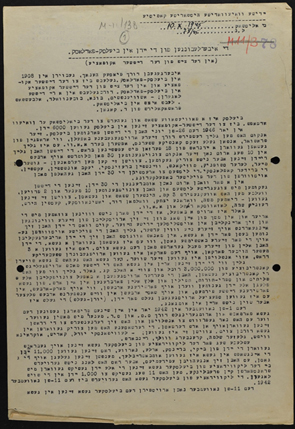

 Jewish Voivodeship
Historical Commission Alystock Ln. 444378 10. X. 1945 · 78/45 ·
M - 11/138
Jewish Voivodeship
Historical Commission Alystock Ln. 444378 10. X. 1945 · 78/45 ·
M - 11/138 Komisja Historyczna
Województwa Żydowskiego Alystock Ln. 444378
10.X.1945 · 78/45 · M - 11/138
Komisja Historyczna
Województwa Żydowskiego Alystock Ln. 444378
10.X.1945 · 78/45 · M - 11/138
Copyright
© 2023 Andrew Blumberg
Updated
March 5, 2023
JewishGen Home Page | KehilaLinks Directory
This site is hosted at no cost by JewishGen, Inc., the Home of Jewish Genealogy. If you have been aided in your research by this site and wish to further our mission of preserving our history for future generations, your JewishGen-erosity is greatly appreciated.